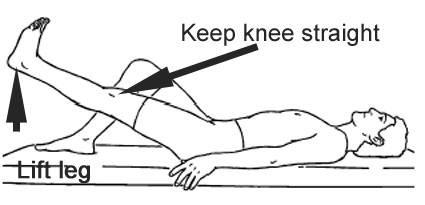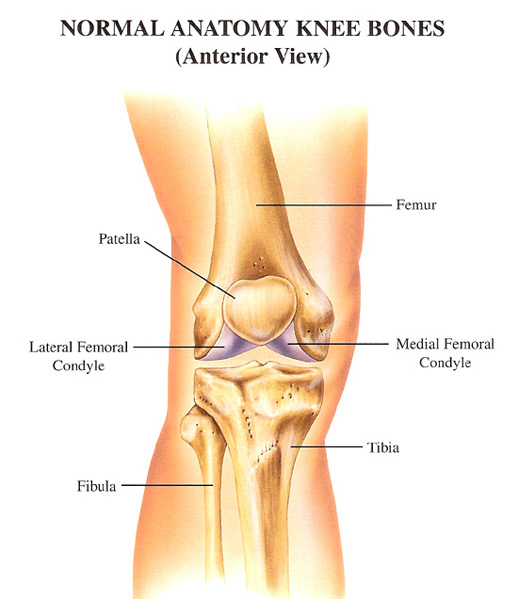
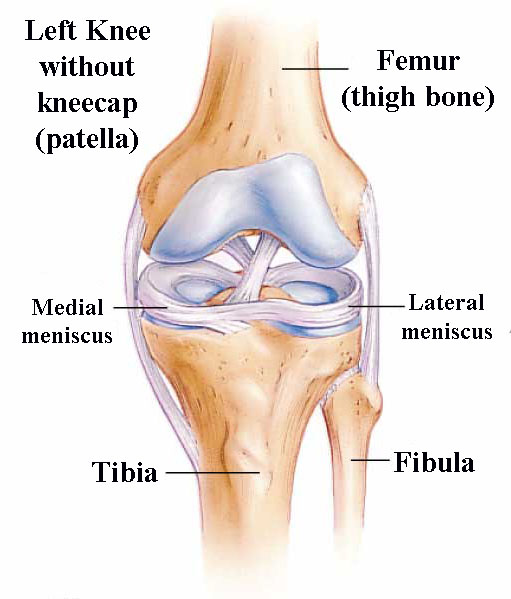

The meniscus cartilages, which are like shock absorbers between the round end of the femur (thigh bone) and the relatively flat top of the tibia (shin bone), can have tears of various shapes.
Examples of meniscus tears
The tear in the meniscus cartilage can be shaped like a parrot beak. With this type of tissue flipping in and out of the space between the femur and the tibia, it is not hard to imagine how a patient might have feelings like catching, sometimes also with a clicking or popping sensation.
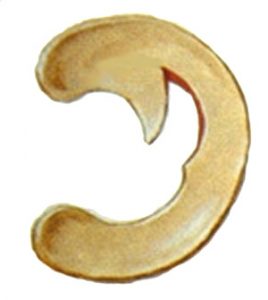
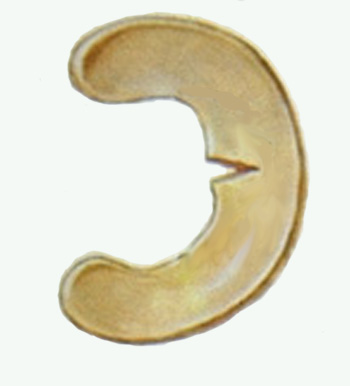
This type of tear is called a radial tear, as it radiates out from a central point, like spokes from a wheel.
To the left is an example of a vertical meniscus tear, through the substance of the meniscus. When these types of tears are big, they can displace into the joint and are called bucket handle tears (see pictures below to the right, along with other types of tears).
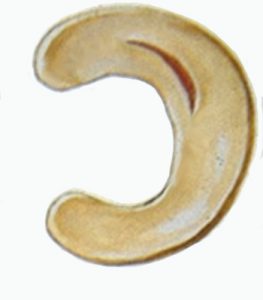
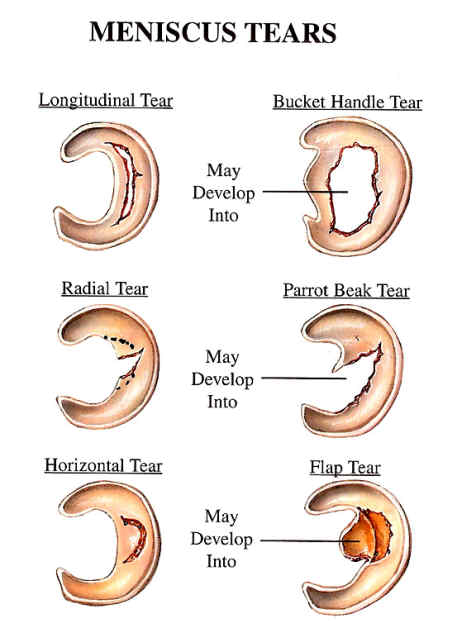
To the left are other illustrations of types of meniscus tears.
The central 2/3 of the meniscus does not have the biologic capability of healing. In other words, if there were a tear and it was sutured together, eventually the stitches would break and the meniscus would not heal. However, when these tears occur near the outer edge or periphery, which is seen more often in younger patients, the tears can sometimes be repaired instead of taking out the torn part.
This image from an MRI shows not only the torn meniscus in the back of the knee, but since the injured tissue leaks tissue fluid, and since there is more leakage than reabsorption, this fluid accumulates in the knee. This fluid in the knee is called an effusion.
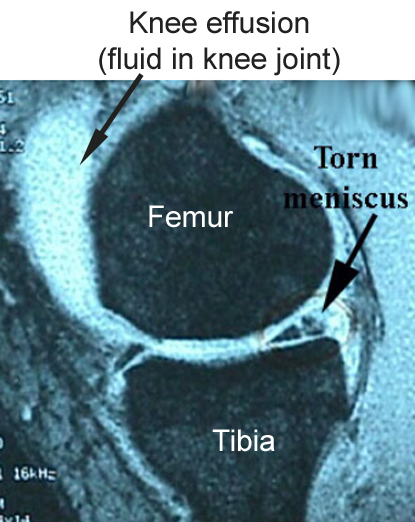
Here is another MRI example showing torn meniscus, in the back part of the knee, called the posterior horn.
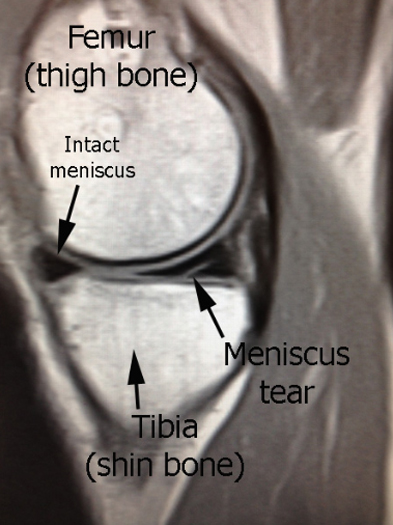
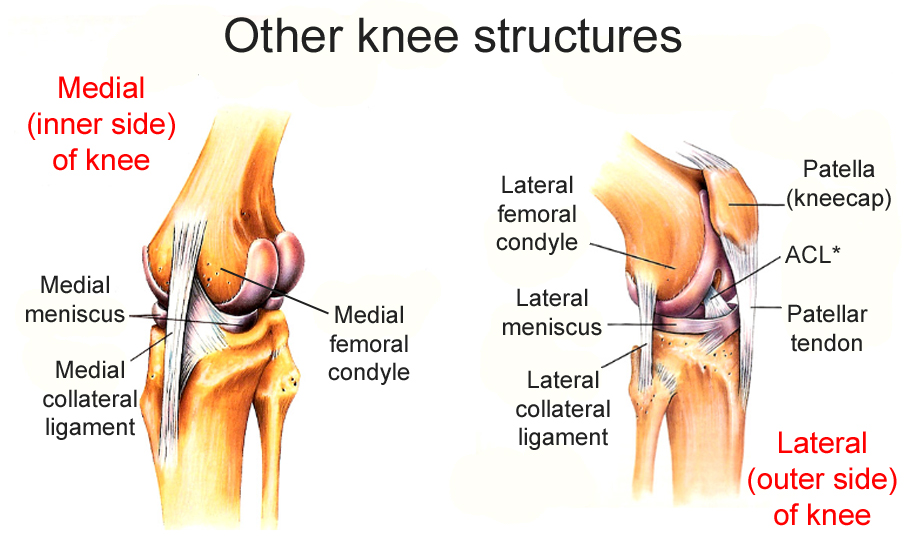
Knee Exercises
